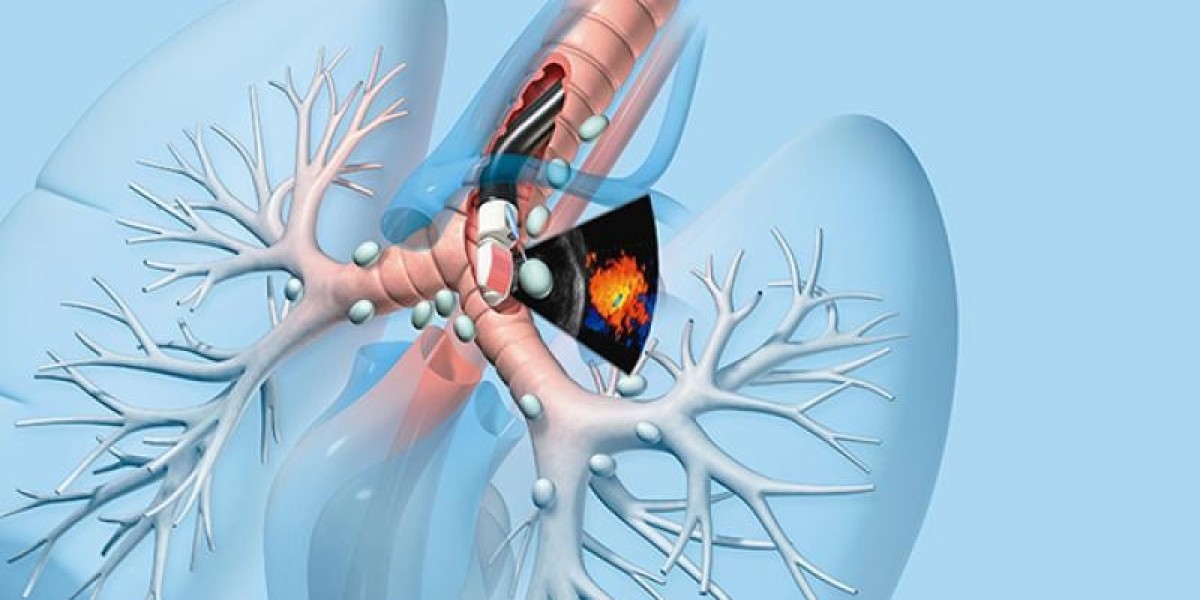History and Development
Endobronchial ultrasound biopsy (EBUS) was first introduced in the 1990s as an imaging technique to visualize lesions and lymph nodes within and adjacent to the lung. In the early 2000s, EBUS gained the ability to perform real-time biopsying of these structures through the use of a specialized bronchoscope equipped with a ultrasound probe at its distal tip. This allowed physicians to see targets in the lung and sample them under direct ultrasound guidance for histological analysis. Over the following decade, improvements to EBUS technologies and techniques established it as a front-line diagnostic tool for evaluating possible lung cancer and other pulmonary conditions.
Advantages Of Endobronchial Ultrasound Biopsy Over Conventional Bronchoscopy
Traditional bronchoscopy relies on the bronchoscopist's eyes to detect and sample visible abnormalities within the central airways. However, some lung cancers and metastatic lymph nodes are not visible with the naked eye through the bronchoscope. Endobronchial Ultrasound Biopsy helps overcome this limitation through the use of high-frequency ultrasound to "see" beyond the visual range of conventional bronchoscopy. This ultrasound imaging enables physicians to detect smaller, non-visible lesions and lymph nodes for biopsy even when they are outside the accessible range of the bronchoscope. Studies have shown EBUS to have significantly higher diagnostic yield compared to standard bronchoscopy alone for evaluating certain lung abnormalities and staging lung cancer. Its real-time ultrasound guidance also allows targeted biopsy of lesions less than 1 cm in size with improved safety.
Applications Of Endobronchial Ultrasound Biopsy In Lung Cancer Diagnosis And Staging
One of the most common uses of EBUS is for diagnostic evaluation of suspected lung cancer. When abnormal findings are seen on a chest CT or x-ray, EBUS can be performed to obtain biopsy samples to determine if cancer is present and, if so, what type of cancer it is. EBUS guidance improves the ability to biopsy small, difficult to reach lung masses or nodules compared to standard bronchoscopy. It is also valuable for sampling suspicious lymph nodes in the mediastinum, which is critical for accurate lung cancer staging. By determining if the cancer has spread to these lymph nodes, EBUS helps guide treatment decisions such as whether additional surgery or chemotherapy is needed. EBUS is also applied for follow-up surveillance to detect cancer recurrence after initial treatment.
Technical Aspects and Procedure of EBUS
During an EBUS procedure, the patient is given local anesthesia and sedation. A specialized bronchoscope equipped with a slight bend and an ultrasound frequency probe at the tip is then inserted through the mouth or nose into the windpipe and main bronchi. Real-time ultrasound images are seen on a monitor as the probe scans the areas adjacent to the airways. When a target lesion or lymph node is located, a biopsy forceps or fine needle aspiration needle can be advanced through the working channel of the bronchoscope under ultrasound guidance to precisely obtain cytology or histology specimens. Multiple biopsies are usually done during one procedure, which takes 30-60 minutes depending on the number and location of samples needed. Specimens are then analyzed in a pathology lab to determine if cancer cells are present.
Financial Impact Of Endobronchial Ultrasound Biopsy For Healthcare Systems
The increased accuracy and diagnostic yield provided by EBUS compared to standard bronchoscopy has led professional medical societies to recommend it as the preferred method for evaluating most suspected lung cancers. From a healthcare economics perspective, using EBUS as the front-line diagnostic tool saves costs by reducing the need for additional procedures that may otherwise be done when standard bronchoscopy misses a diagnosis or fails to provide adequate tissue samples for analysis. Faster diagnosis using EBUS can hasten appropriate treatment which may improve outcomes while avoiding prolonged, unnecessary, and costly diagnostic workups. Hospitals and surgery centers profit from the higher volume of lung cancer surgeries and other interventions made possible by EBUS's improved staging ability. Manufacturers have also benefited financially from the shift to EBUS as the new standard of care for lung cancer evaluation and staging.
Continued Technological Advancements
While EBUS-guided biopsy is now an established part of respiratory medicine, the technology continues to evolve. Newer EBUS bronchoscopes feature improved ultrasound transducer arrays, digital signal processing, and needle visualization capabilities for even more precise targeting. The integration of EBUS with other imaging modalities like fluoroscopy, electromagnetic navigation bronchoscopy, and confocal laser endomicroscopy further enhances diagnostic capabilities. The future may see the use of EBUS to deliver local therapies directly to lung lesions as an alternative to surgery. Ongoing research also explores novel EBUS applications like diagnostic evaluation of esophageal and mediastinal structures. As the technology and its clinical applications advance, EBUS will likely remain an important fixture in the field of pulmonary medicine.
Since its two decades ago, endobronchial ultrasound biopsy has revolutionized the diagnosis and staging of lung cancer. With improved ability to detect and sample even small, non-visible lung lesions and lymph nodes, EBUS has become essential for evaluation of suspected lung cancers and an important revenue generator for healthcare facilities. Its higher diagnostic yield compared to standard bronchoscopy reduces costs by lessening reliance on additional procedures. As technology continually enhances EBUS abilities, it will likely remain a cornerstone in pulmonary medicine and a major asset for healthcare systems.
Get More Insights on- Endobronchial Ultrasound Biopsy
Discover the Report for More Insights, Tailored to Your Language:
About Author:
Money Singh is a seasoned content writer with over four years of experience in the market research sector. Her expertise spans various industries, including food and beverages, biotechnology, chemical and materials, defense and aerospace, consumer goods, etc. (https://www.linkedin.com/in/money-singh-590844163)



